VERTIGO
1958 • Alfred HitchcockCast: James Stewart, Kim Novak, Barbara Bel Geddes, Tom Helmore, Henry Jones, Raymond Bailey, Ellen Corby, Konstantin Shayne, Lee Patrick
Screenplay: Alec Coppel, Samuel Taylor; Based on D'entre les morts 1954 novel by Pierre Boileau, Thomas Narcejac
Cinematography: Robert Burks
Music: Bernard Herrmann
Producer: Alfred Hitchcock
Paramount Pictures
Here I was born, and there I died. It was only a moment for you; you took no notice.
Vertigo is a masterpiece of suspense, drama, and romance, starring Jimmy Stewart as Scottie, a police detective who is forced to retire due to his crippling fear of heights. But when an old friend asks him to investigate his much younger wife, Scottie is pulled into a mystery that will change his life forever. As Scottie delves deeper into the investigation, he becomes dangerously obsessed with the beautiful Madeleine, played by an impossibly stunning Kim Novak. Her enigmatic presence and mysterious behavior lure him into a twisted world of intrigue and deception, and Scottie finds himself caught up in a web of lies and deceit that threatens to destroy him.
Hitchcock's mastery of suspense in Vertigo is unparalleled. From the very beginning, he artfully weaves a web of tension that tightens with each passing scene. One of Hitchcock's signature techniques is his meticulous attention to detail. Every shot, every frame in Vertigo is a carefully crafted piece of the suspense puzzle. The director manipulates the camera to evoke specific emotions in the audience. For instance, the dizzying heights of San Francisco's landmarks are not just backdrops; they become integral to the suspense, mirroring the dizzying psychological state of Scottie Ferguson. The pacing of the film is a testament to Hitchcock's understanding of timing. He doesn't rush the narrative; instead, he allows suspense to build gradually. Whether it's Scottie tailing Madeleine through the streets of San Francisco or the haunting sequences in the sequoia forest, Hitchcock lets the tension simmer, allowing the audience to marinate in the uncertainty of the unfolding mystery. Through Scottie's eyes, you are drawn into the enigma of Madeleine. We see what he sees, feel what he feels, and the uncertainty becomes palpable. Is Madeline possessed by a ghost? Or is there a simpler, but maybe more sinister explanation? This subjective perspective intensifies the suspense, making you question the reality presented on the screen. The tension becomes a palpable force, seeping into every frame and lingering in the air. Hitchcock's ability to sustain this suspense over the course of the film is a testament to his skill as a director, turning Vertigo into a timeless masterclass in the art of suspense and mystery. It is by far Hitchcock’s most mesmerizing work.
Hitchcock's use of the "Vertigo Shot" in the first bell tower scene exemplifies his skill in creating suspense through visual storytelling. The iconic sequence begins with Scottie ascending the steep and winding staircase of the San Juan Bautista Mission bell tower, following Novak’s Madeleine. As Scottie climbs higher, the camera captures his perspective, emphasizing the dizzying heights. Then comes the "Vertigo Shot." This technique involves simultaneously zooming in with the lens while physically moving the camera away from the subject, creating a disorienting effect. The brilliance of the often-imitated Vertigo Shot lies in its ability to convey Scottie's psychological state to the audience. In another instance of the shot, as the camera zooms in, Scottie's face becomes the focal point, revealing his fear, confusion, and profound distress. The disconcerting visual distortion mirrors Scottie's inner turmoil, effectively pulling the audience into his emotional experience. The unease felt by Scottie is felt by the viewer as they are, in essence, experiencing the same psychological disorientation. This technique goes beyond the conventional methods of storytelling; it's a visual metaphor for Scottie's internal conflict and the spiraling obsession that engulfs him. The Vertigo Shot is not merely a cinematic trick; at least not the way Hitchcock uses it. It's a tool that can connect the audience intimately with the character's emotions.
Vertigo transcends the conventions of even Hitchcock’s typical thriller, evolving into a profound character study that delves into the intricate recesses of the human psyche. At its core, the film is not just about the unraveling mystery of Madeline; it's a psychological exploration of its central character, Scottie Ferguson. Scottie's obsessive pursuit of Madeleine is not merely a detective's quest; it's a reflection of his own psychological struggles. We witness the gradual erosion of Scottie's rationality and emotional stability as he becomes entangled with Madeleine. His acrophobia initially presented as a physical limitation, transforms into a symbolic manifestation of his susceptibility to obsession. His descent into madness is not sudden; it's a gradual unraveling. Scottie is a man grappling with desires and fears he cannot really even comprehend himself. The movie explores Scottie’s capacity for obsession. Madeleine is unattainable, leading to an unraveling of Scottie’s mental stability. Stewart deserved an Oscar for this performance. He captures the essence of a man teetering on the brink of his own sanity, a man who descends into obsession.
Vertigo is also a visual symphony orchestrated by cinematographer Robert Burks. The use of color contributes significantly to the dreamlike quality that permeates the story. In particular, the way reds and greens are employed is strikingly vivid. The violent reds are intense, heightening the emotional impact of their scenes. Conversely, the greens take on an air of mystery. They are not merely colors on the screen but elements that carry symbolic weight. The sumptuous greens contribute to the sense of intrigue. Green is associated with Madeleine and represents illusion, which is another theme. The recurring motifs of spirals and heights are not arbitrary; they are deliberate choices that add to the story. The spiral, symbolizes Scottie’s obsession and psychological descent. The heights, apart from being a manifestation of Scottie's acrophobia, become a metaphor for the truth and his pursuit of it. These symbols are not merely aesthetic choices; they are are triggers placed by Hitchcock to intensify your emotions.
Bernard Herrmann's musical score is not just a background accompaniment, but a constant reminder of the mystery and danger Scottie’s obession may bring. Herrmann's score is both haunting melodies and suspenseful. Take, for instance, the main title sequence. The swirling, hypnotic music sets the tone for the entire film, creating an atmosphere of intrigue right from the start. It contributes to the film's dreamlike quality, drawing the audience into the psychological labyrinth that is Vertigo. In the bell tower scene, Herrmann's score takes on a central role. As Scottie ascends the dizzying heights, the music intensifies, mirroring both the physical and emotional tension. I don’t know how to critique music as I am not a musician, but the score becomes representation of Scottie's inner turmoil. The synchronization of the audio and visual are alarming, uneasy, thrilling and frightening… all at once. You, like Scottie, feel all of it. The love theme, often referred to as "Scene d'Amour," is a sweeping melody that encapsulates the romantic essence of the film. This theme weaves in and out of the film adding a layer of depth to tumultuous relationship between Scottie and Madeline. The score is also a trigger for tension. For instance, when Madeleine makes her initial appearance, Herrmann's music swells with a sense of foreboding, creating an atmosphere that prepares the audience for the coming mystery.
Upon its initial release in 1958, Vertigo faced a reception that was far from the acclaim it now enjoys. In fact, the film was met with a somewhat muted response from both critics and audiences. Contemporary reviews characterized it as a film that struggled to find its footing with viewers. Hitchcock's exploration of psychological intricacies and the darker recesses of the human mind seemed to challenge the expectations of audiences accustomed to more straightforward and conventional narratives. Critics at the time often found the plot convoluted, and the film's slow pacing and emphasis on psychological depth were seen as departures from the more straightforward suspense narratives that Hitchcock was known for. Stewart's portrayal of Scottie Ferguson, while now lauded as one of his finest performances, was met with mixed reactions. Audiences, accustomed to seeing Stewart in more straightforward and heroic roles, might have found it difficult to reconcile his everyman image with Scottie. Hitchcock had big hits under his belt like Rear Window and The Man Who Knew Too Much, so releasing a more artistic and psychological thriller like Vertigo may have put audiences off. Maybe it’s no coincidence that his next string of films were more commercial hits like North by Northwest, Psycho and The Birds. However, the passage of time has redeemed both Hitchcock and the film. The slow burn of the narrative, once seen as a flaw, became a strength, allowing for a more profound exploration of the characters and their motivations. Since 1952, Sight & Sound, the British Film Institute's magazine, has conducted a decadal ritual, soliciting the opinions of eminent film critics, historians and filmmakers worldwide to curate a roster of the ten greatest films ever made. In the polls of 1962 and 1972, Vertigo failed to secure a spot within the top 10 films as per the votes. It wasn't until 1982 that Vertigo made an appearance, claiming the 7th position. Subsequently, in 1992, it ascended to the 4th spot, progressed further to 2nd place in 2002, and ultimately clinched the #1 spot in 2012, surpassing Citizen Kane. In the latest 2022 edition of the Sight & Sound poll, Vertigo dropped to 2nd place behind Jeanne Dielman, 23, quai du Commerce, 1080 Bruxelles.
One final thing I have to do... and then I'll be free of the past.
Notable Awards & Accomplishments
2 Academy Award Nominations: Best Art Direction, Best Sound
IMDB Top 250: #103 (as of this writing)
Sight & Sound 100 Greatest Films Poll: #1 in 2012
Streaming: Not Currently Streaming
Digital Rental/Purchase: Available at most major digital retailers
Physical Media: Available on 4K, Blu-Ray and DVD


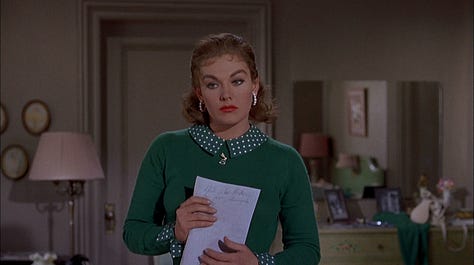

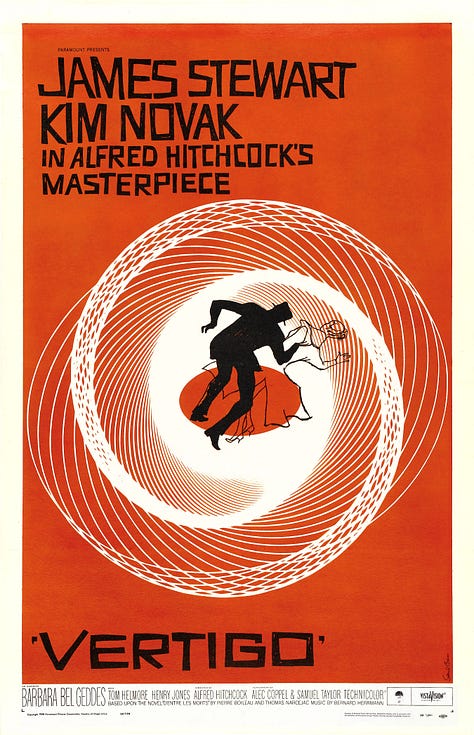
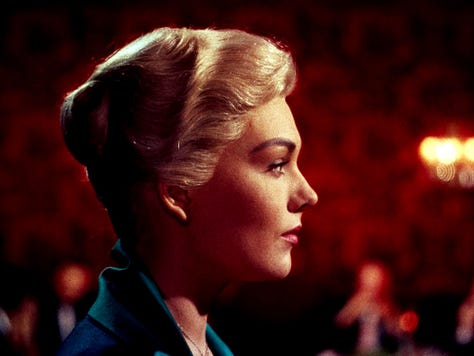

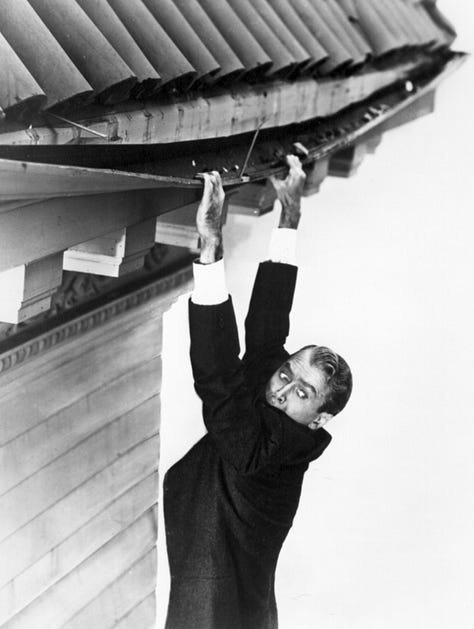
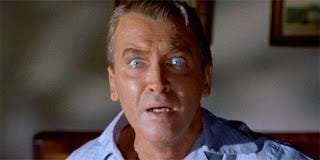

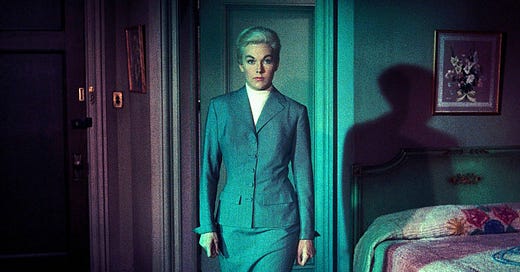



An incredible film that, in my experience, always reveals new secrets on each rewatch.